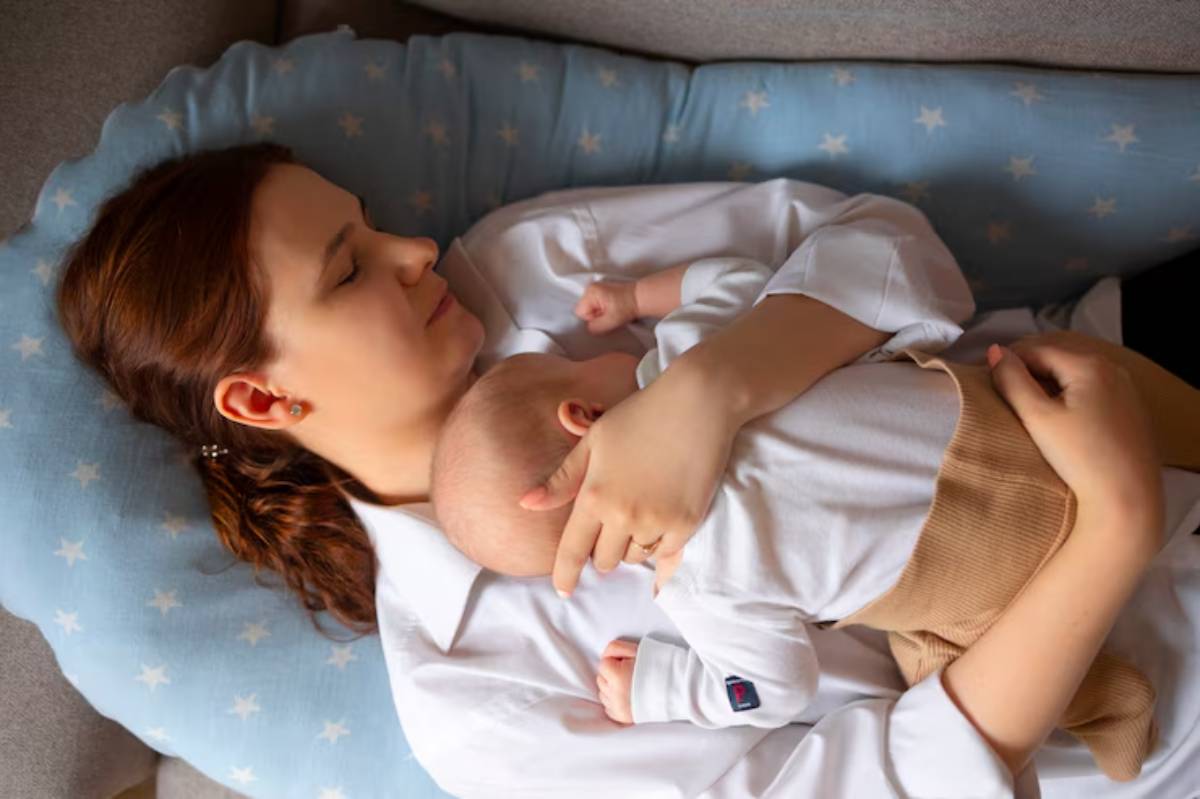
Nap Hacks for Parents of Newborns
You knew sleep would be a rare luxury with a newborn. But no one quite prepared you for the full-body exhaustion that hits when you’re running on broken sleep and caffeine. If you’re waking up feeling like you haven’t slept at all, or if you’re regularly googling “how to function with three hours of sleep,” this guide is for you.
While your baby’s sleep is often the focus, your sleep matters too. And no, full nights aren’t the only answer. Well-timed, strategically placed naps — even as short as 20 minutes — can provide real, restorative benefits, especially when you’re operating in survival mode.
In this article, we’ll explore smart, practical parent power naps, how to sync naps with your newborn sleep routine, and expert-backed sleep tips for mums (and dads). You’ll learn how to make the most of limited rest opportunities, feel more human during the day, and recharge your body and mind — even when your nights are far from restful.
Why Naps Matter More Than You Think
Sleep Deprivation and Its Effects
Being a new parent often means you’re sleeping in scattered bursts — and never quite enough. The result? Impaired concentration, low mood, higher stress levels, and reduced immune function. Studies from Sleep Health Journal show that postpartum parents experience a significant drop in cognitive function after just two consecutive nights of sleep loss.
Naps, even short ones, can counteract some of these effects by:
- Boosting alertness and mood
- Improving memory and decision-making
- Reducing stress hormones like cortisol
The Power of the Power Nap

A 20–30 minute nap — often referred to as a power nap — is long enough to boost alertness and short enough to avoid sleep inertia (the grogginess you feel after waking from deep sleep).
This makes them ideal for parents who can’t afford a long rest but still need a quick reset.
The Realities of Napping with a Newborn
It’s Not About Sleep Quantity — It’s About Timing
Your baby may nap four to six times a day, but that doesn’t mean you’ll always get to rest too. The reality is that your newborn’s sleep doesn’t follow adult sleep cycles, making it tough to predict or plan naps for yourself.
But there’s good news: by aligning your rest with even one or two of your baby’s naps per day, you can reduce accumulated sleep debt and improve your mood and patience.
Don’t Wait for the “Perfect Moment”
There’s a temptation to wait until the laundry is done, the kitchen is clean, or your phone is caught up — but these tasks will still be there. The difference? You’ll tackle them better if you’re not running on empty.
Nap Hacks That Actually Work
1. Lower Your Sleep Expectations
Let go of the idea that naps must be in bed, under a blanket, for an hour or more. You can nap:
- On the sofa with a neck pillow
- While your baby safely naps nearby
- With white noise playing to mimic a restful environment
Even 10–15 minutes of eyes-closed rest can help calm your nervous system.
2. Stack the Odds in Your Favour
To nap more effectively:
- Keep the room dark or use an eye mask
- Turn off notifications or put your phone on Do Not Disturb
- Use earplugs or low white noise to block distractions
Set a timer for 20–30 minutes to prevent oversleeping and reduce grogginess.
3. Schedule Help — and Nap Guilt-Free
If you have a partner, friend, parent, or postnatal doula available, ask for a window of support to cover a feed, walk, or chores while you rest. This isn’t indulgent — it’s necessary.
You might also consider creating a shared sleep schedule, like we outline in our guide to how to split night duties without losing sleep.
Syncing with Your Newborn’s Sleep Routine
Follow Their Natural Rhythms
Newborns sleep frequently — around 14 to 17 hours a day, split into multiple short naps. Try tracking your baby’s sleep for a few days to spot patterns. You might notice they nap reliably mid-morning or early afternoon — perfect times to nap yourself.
Use apps, a notebook, or even a simple calendar to track patterns, not control them. Awareness is the goal here, not strict routine.
Use Wake Windows to Predict Naps
Wake windows are periods your baby can comfortably stay awake based on age:
- 0–6 weeks: 45–60 minutes
- 6–12 weeks: 60–90 minutes
- 3–4 months: 75–120 minutes
Once you understand wake windows, you can anticipate when a nap is likely, and prep for your own rest in advance.
Creating a Nap-Friendly Environment for Yourself
Keep It Simple and Familiar
Just as you might design your baby’s room for optimal sleep, your own nap space matters.
You don’t need a spa-like setup, but small cues make a difference:
- Dim lighting or blackout curtains
- Consistent white noise
- A cosy blanket or wearable comfort (like a hoodie or wrap)
Use Aromatherapy or Comfort Triggers

Lavender, chamomile, or soft music can act as natural signals to your brain that it’s time to rest. Over time, these cues become linked to rest, helping you fall asleep faster — even if you’re only grabbing 15 minutes.
If you’re also optimising your baby’s space, check out our blog on setting up the ideal sleep environment for your newborn for tips that benefit the whole family.
Real-Life Story: Maya and Her Micro-Naps
Maya, mum to a 7-week-old, found herself spiralling into tears most afternoons. “It wasn’t that I never slept,” she recalls. “It was that I never felt like I’d truly rested.”
After speaking with her health visitor, she started setting a 10-minute nap timer when her baby went down for the second nap of the day. She’d lie on the couch, no phone, no guilt. At first, she didn’t always fall asleep — but just resting helped.
Two weeks later, Maya noticed a difference: “I didn’t snap at my partner, and I even laughed more. Those tiny naps gave me a tiny piece of myself back.”
Sleep Tips for Mums: Beyond the Nap
Hydration and Blood Sugar Balance
Sleep-deprived bodies crave sugar and caffeine. The result? Energy crashes.
To stay stable:
- Drink water consistently throughout the day
- Eat protein with every snack (think nuts, boiled eggs, hummus)
- Limit caffeine after 2 p.m. to avoid nighttime interference
Lean Into Mindfulness
It’s not always possible to nap, but you can still rest your mind.
Try:
- Guided meditations
- Breathwork sessions
- Stretching or body scans
Apps like Insight Timer and Calm offer free short sessions perfect for nap substitutes.
When You Can’t Nap — What Then?
Rest Without Sleeping
Not every rest has to involve dozing off.
Use your baby’s nap as a cue to:
- Lie down and close your eyes
- Breathe deeply for 5–10 minutes
- Read something calming or journal briefly
These “non-sleep deep rest” activities support your body’s recovery processes and give your brain a break.
Prioritise One Rest Window a Day
You won’t nap every time your baby sleeps — and that’s okay. Instead, focus on one dedicated rest window per day, no matter what else is on the to-do list.
A Nap Is Not a Luxury — It’s a Lifeline

In the whirlwind of nappy changes, cluster feeds, and constant adjustments, your needs matter too. And while long, uninterrupted sleep may be out of reach for now, small, strategic naps can restore your energy, patience, and sanity.
You don’t need a perfect system. You just need a plan that’s good enough — one that allows you to pause, rest, and rebuild. Nap hacks aren’t about control. They’re about compassion.
So, here’s your reminder: you’re allowed to close your eyes. The washing can wait. But your well-being shouldn’t have to.
Found a nap strategy that works for you? Share your tip or story in the comments, and subscribe for more parent-first, sleep-friendly advice delivered to your inbox.


